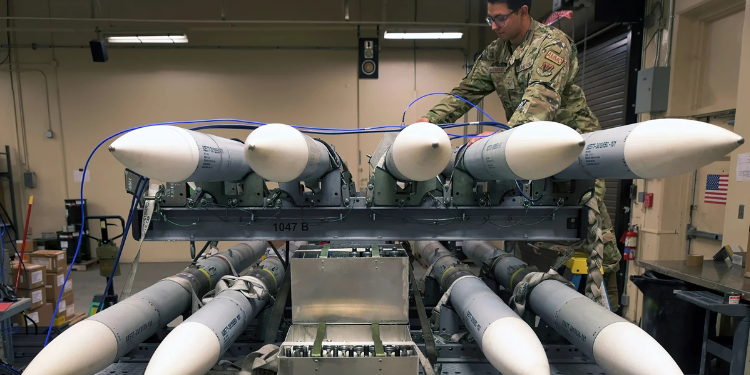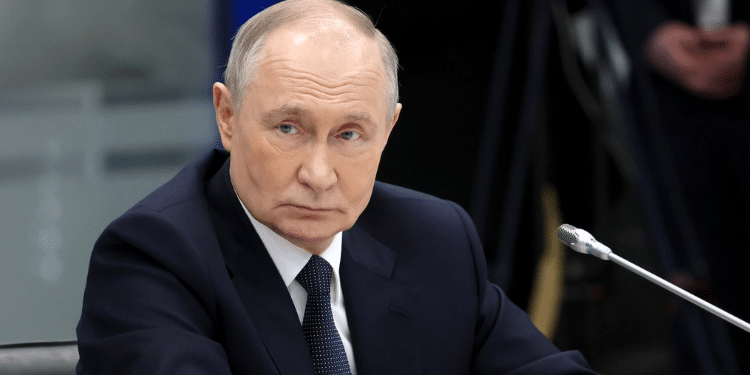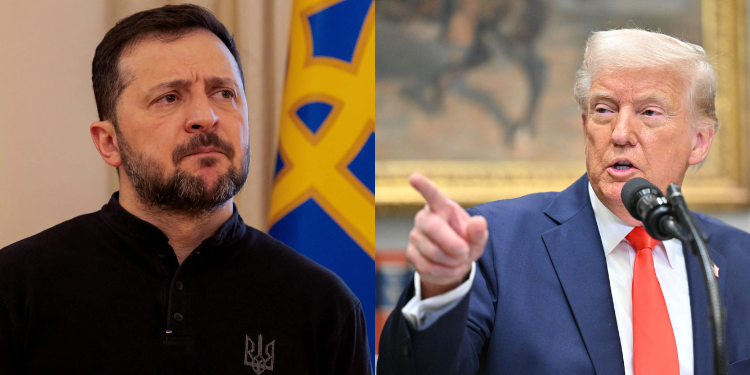The Pentagon has secretly blocked Ukraine from using U.S.-supplied long-range missiles, specifically Army Tactical Missile Systems (ATACMS), causing unrest in Kyiv and for Zelensky.
The Pentagon has not explicitly informed Ukraine of this policy, but has effectively limited the use of long-range missiles through operational constraints.
Reasons by Trump
The Pentagon instituted a secret approval mechanism, crafted by Undersecretary Elbridge Colby, which means Ukraine must now secure Defense Secretary Pete Hegseth’s authorization for any offensive use of ATACMS or allied weapons like the UK’s Storm Shadow that rely on U.S. intelligence.
This decision is a reversal of a late-2024 policy under the Biden administration that had briefly allowed such strikes as a response to North Korean troop deployment in support of Russia.
U.S Defence officials have made the move to align with the current administration’s broader aim, which is to limit escalation and potentially pave the way for peace talks with Moscow.
Ukraine has been allowed to use U.S.-provided weapons for limited cross-border strikes, but deep strikes into Russia are restricted.
Some U.S. officials argue that allowing deep strikes could help Ukraine disrupt Russian supply lines, while others fear it could lead to retaliation or escalation.
Trump has expressed frustration over stalled peace efforts and hinted at imposing economic sanctions or tariffs on Russia if talks fail.
“I disagree very vehemently with sending missiles hundreds of miles into Russia. Why are we doing that? We’re just escalating this war and making it worse. That should not have been allowed to be done.”
Limitations for Ukraine
Trump’s administration has shifted toward selling weapons rather than providing them outright.
Also Read: Trump to Replace Kenya’s Police in Haiti After Failing to Contain Gangs
Ukraine was recently allowed to purchase Extended Range Attack Munition (ERAM) missiles, but only if European nations cover the cost.
Without long-range strike options, Ukraine is forced into a more reactive and defensive posture, which could prolong the conflict and reduce its ability to regain occupied territories.
ATACMS earlier gave Zelensky the capability to target deep into Russian-held territory, hitting command and control centres, airfields, and logistical nodes.
The missile restriction weakens Ukraine’s leverage in negotiations. Zelensky has warned that Putin won’t negotiate unless pressured, and the inability to strike Russian assets undermines that pressure.
Without the ability to precautionary strike Russian launch sites or troop concentrations, Ukraine remains vulnerable to missile and drone attacks, as seen in recent incidents like the drone strike near Russia’s Kursk nuclear plant.
Strategies by Zelensky
However, Ukraine continues to develop and deploy its own long-range systems, such as drones and a new cruise missile dubbed the Flamingo.
While ATACMS strikes are restricted, the U.S. has approved the sale of 3,350 Extended Range Attack Munitions (ERAMs), expected to be delivered to Ukraine in roughly six weeks. Using these may also require Pentagon approval, depending on targeting specifics.
Ukraine has received a green light from Germany to begin manufacturing its own long-range weapons systems.
Also Read: Trump Deploys US Warships Carrying Over 2,000 Marines Toward Venezuela
This initiative replaces the previously requested German-made Taurus missiles, which Berlin declined to supply directly.
The new agreement allows Ukraine to produce weapons capable of striking targets beyond its borders, and the first systems are expected to be operational within weeks, with no additional training required for Ukrainian troops.
Germany and other EU nations are supporting Ukraine’s arms manufacturing efforts, including funding and technology transfers.
European leaders are coordinating with Kyiv to impose further sanctions on Russia and isolate it diplomatically.
Follow our WhatsApp Channel and X Account for real-time news updates.




![11 Companies To Be Granted Licenses To Export Coffee From Kenya [Full List] Afa To Issue Coffee Export Licenses To 11 Companies In Kenya]( https://thekenyatimescdn-ese7d3e7ghdnbfa9.z01.azurefd.net/prodimages/uploads/2025/11/AFA-CEO-2025-360x180.png)













![Billions Each Top Kenyan Bank Has Made So Far In Profits This Year [List] Q3 2025 Results For Equity, Kcb, Co-Op, Absa And Other Banks]( https://thekenyatimescdn-ese7d3e7ghdnbfa9.z01.azurefd.net/prodimages/uploads/2025/11/C0-OP-KCB-Equity-Absa-360x180.png)


























































